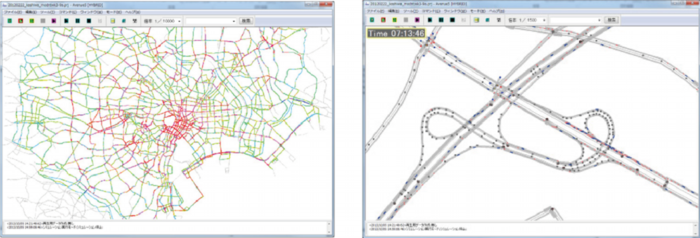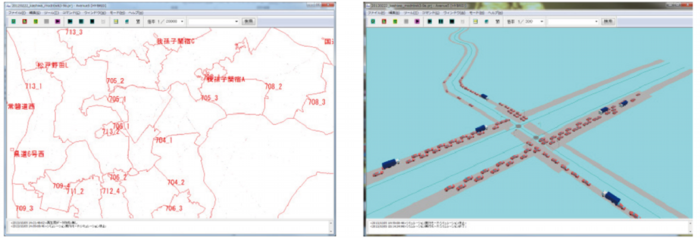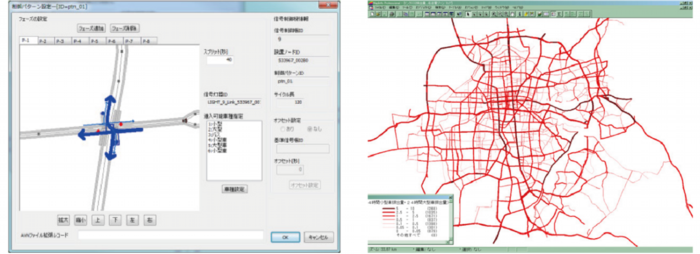SOUND Ver.5, a traffic simulator for wide area road networks.

Simulation On Urban road Network with Dynamic route choice
SOUND (Simulation On Urban road Network with Dynamic route choice) is a mesoscopic traffic simulation model which was originally developed in the Institute of Industrial Science, the University of Tokyo, and was commercialized by i‐Transport Lab. Co., Ltd., a venture company in Tokyo.
It is applicable to the road network of the 1 – 100 km scale to evaluate various traffic control & management scheme. The latest version of SOUND is merged with AVENUE, a microscopic traffic simulation, and shares its user‐friendly graphic user interface.

Special Features of SOUND
- applicable to a large urban scale road network.
- a mesoscopic traffic simulation model which deals discrete vehicles with 1 second update interval according to the fundamental diagram of traffic flow.
- dynamic route choice capability taking account traffic congestion, travel time, toll charge, etc.
- incident modeling for lane closures and road closures.
- traffic signal control capability for an intersection with auxiliary lanes and regulations on turning direction.
- customization on traffic information provision and route guidance service.
Software Capability
- interactive data editing through GUI.
- layered management for flexible data build.
- 2D/3D animation of vehicle motions.
- recording animation movie.
- import digital road map and GIS polygons for zones.
- project administration mode to put related cases in order.
- batch calculation mode to run multiple cases at once.


Case Studies
- Congestion mitigation by the construction of new by‐pass roads.
- Time saving with the route guidance service using probe data.
- CO2 reduction through the penetration of eco‐driving assistance.
- Evacuation planning using vehicles at large‐scale disaster
- Traffic regulation planning for a big event or an incident.
- Toll revision and traffic demand switchover from arterial roads.
- Advanced traffic control such as variable channelization, etc.
Leaflet
